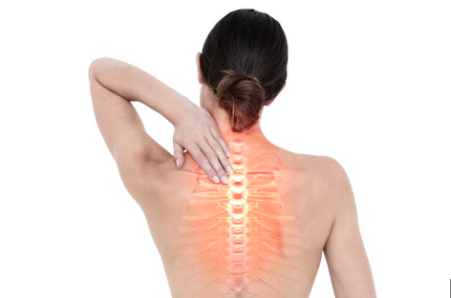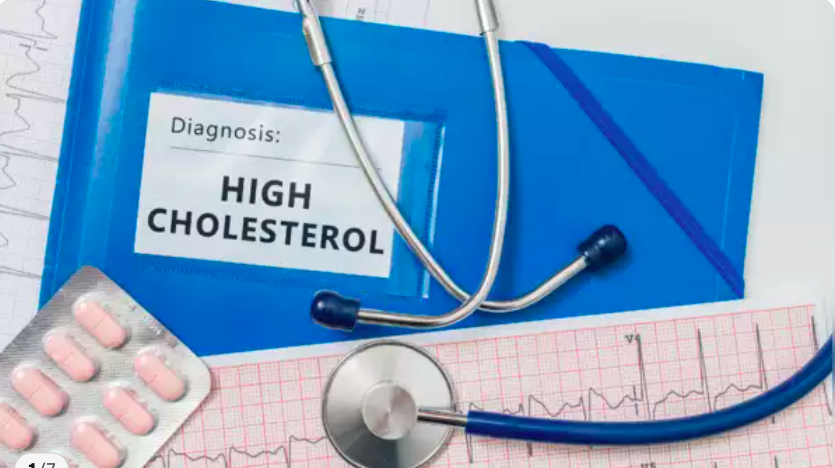Health
Understanding Back Pain: Causes, Treatments, and Prevention

Understanding Back Pain: Causes, Treatments, and Prevention
Back pain is a common experience, affecting millions worldwide. It can range from a dull ache to a sharp, debilitating pain that disrupts daily activities. While the experience itself might be unpleasant, understanding the causes of back pain empowers you to manage it effectively. This article delves into the various reasons behind back pain, explores treatment options, and offers valuable prevention tips.
2: Deciphering the Culprits: Common Causes of Back Pain
Back pain can arise due to various factors, often categorized as mechanical, inflammatory, or referred pain.
Here’s a breakdown of some frequent culprits:
- Muscle Strains and Sprains: These are the most common causes. Overexertion, lifting heavy objects improperly, or awkward movements can strain muscles or ligaments supporting the spine, leading to pain and stiffness.
- Disc Herniation: The discs between vertebrae act as cushions. A herniated disc occurs when the soft inner core bulges or ruptures, pressing on nerves and causing pain, numbness, or weakness.
- Arthritis: Degenerative changes in the joints of the spine (osteoarthritis) or inflammatory conditions like rheumatoid arthritis can lead to back pain, stiffness, and inflammation.
- Poor Posture: Slouching or hunching puts undue stress on back muscles and ligaments, contributing to pain over time. Maintaining good posture while sitting, standing, and sleeping is crucial for back health.
- Overweight and Obesity: Excess weight puts a strain on the spine and supporting structures, increasing the risk of back pain.
Beyond the Usual Suspects: Less Common Causes of Back Pain
While the above factors are frequent culprits, some less common causes can also trigger back pain:
- Spinal Stenosis: Narrowing of the spinal canal due to bone spurs or disc degeneration compresses nerves, causing pain, numbness, or weakness, especially in the legs.
- Fractures: Back pain can result from fractures in the vertebrae, often due to osteoporosis, trauma, or injury.
- Fibromyalgia: This chronic condition causes widespread pain, including back pain, along with fatigue, sleep disturbances, and cognitive difficulties.
- Kidney Stones: Pain from kidney stones can sometimes radiate to the back, mimicking back pain.
- Tumors: In rare cases, back pain can be a symptom of a tumor in the spine, pelvis, or abdomen.
Shining a Light on the Issue: Diagnosing Back Pain
Diagnosing the cause of back pain often involves a combination of strategies:
- Medical History: Your doctor will discuss your medical history, including past injuries, activities, and overall health.
- Physical Examination: A physical exam to assess posture, range of motion, tenderness, and reflexes helps identify potential causes.
- Imaging Tests: X-rays, MRIs, or CT scans might be needed to visualize the bones, discs, and nerves in the spine and rule out fractures, disc herniations, or other structural abnormalities.
- Blood Tests: In some cases, blood tests may be used to check for inflammatory conditions or infections that could be contributing to back pain.
2: Soothing the Ache: Treatment Options for Back Pain
The good news is that most back pain resolves with conservative treatment within a few weeks.
Here are some common approaches:
- Rest: Limiting strenuous activities allows your body to heal. However, prolonged inactivity can worsen stiffness.
- Pain Medication: Over-the-counter pain relievers like ibuprofen or acetaminophen can help manage pain and inflammation.
- Physical Therapy: Exercises tailored to your specific needs can strengthen core muscles, improve flexibility, and reduce pain.
- Heat or Ice Therapy: Applying heat can help relax sore muscles, while ice can decrease inflammation.
- Massage Therapy: Massage can improve circulation, reduce muscle tension, and promote relaxation.
In some cases, depending on the severity and cause of back pain, stronger medications, injections, or even surgery might be considered.
2: Standing Tall: Preventing Back Pain
Prevention is key to maintaining a healthy back.
Here are some tips:
- Maintain Good Posture: Be mindful of your posture while sitting, standing, and sleeping. Use ergonomic furniture and practice standing up straight with your shoulders back and relaxed.
- Exercise Regularly: Regular physical activity strengthens core muscles that support your spine. Aim for at least 30 minutes of moderate-intensity exercise most days of the week.
- Lift Smart: When lifting objects, bend your knees and keep your back
Keeping Your Back Happy: Frequently Asked Questions (FAQs)
Here are answers to some frequently asked questions about back pain:
1: Should I see a doctor for my back pain?
It’s generally recommended to see a doctor if your back pain:
- Is severe or doesn’t improve with rest and home remedies after a few weeks.
- Causes numbness, weakness, or tingling in your legs.
- Is accompanied by fever, weight loss, or difficulty controlling your bladder or bowels.
- Follows a fall or injury.
How can I sleep better with back pain?
- Choose a supportive mattress and pillows that keep your spine aligned.
- Sleep on your side with a pillow between your knees for better spinal alignment.
- Avoid sleeping on your stomach, which can strain your back.
- Apply heat or ice therapy before bed to ease discomfort.
- Practice relaxation techniques like deep breathing or meditation before sleep.
Can stress contribute to back pain?
Stress can worsen back pain by causing muscle tension and tightness. Techniques like yoga, meditation, or deep breathing exercises can help manage stress and potentially alleviate back pain.
What are some exercises I can do to strengthen my back?
Various exercises can strengthen your back muscles.
Here are a few examples:
- Plank: This isometric exercise strengthens your core muscles, including your back. Hold a plank position for 30 seconds to 1 minute, repeat 2-3 times.
- Supermans: Lie on your stomach with your arms and legs extended. Lift your chest and legs slightly off the ground, hold for a few seconds, then lower. Repeat 10-12 times.
- Bird-Dog: Start on all fours, extend one arm and the opposite leg while keeping your back flat. Hold for a few seconds, then switch sides. Repeat 10-12 times per side.
It’s important to consult with a healthcare professional or physical therapist before starting any new exercise program, especially if you have any pre-existing conditions.
Are there any alternative therapies that can help with back pain?
Several alternative therapies may offer some relief for back pain.
These include:
- Acupuncture: This traditional Chinese medicine practice involves inserting thin needles into specific points on the body. Studies suggest it might help manage chronic pain, including back pain.
- Chiropractic Care: Chiropractors focus on manipulating the spine to improve alignment and potentially alleviate back pain.
- Massage Therapy: Massage can help relax muscles, improve circulation, and reduce pain.
Remember: It’s essential to discuss any alternative therapies with your doctor to ensure they are safe and suitable for you.
Conclusion
Back pain is a prevalent issue, but understanding the causes, treatment options, and preventative measures empowers you to take control of your back health. By maintaining good posture, exercising regularly, and practicing healthy habits, you can significantly reduce your risk of back pain and keep your spine strong and healthy.
References:
- Mayo Clinic: https://www.mayoclinic.org/diseases-conditions/back-pain/diagnosis-treatment/drc-20369911
- National Institute of Neurological Disorders and Stroke: https://www.ncbi.nlm.nih.gov/books/NBK538173/
- American Academy of Orthopaedic Surgeons: https://orthoinfo.aaos.org/en/diseases–conditions/?topic=BrokenBones
Disclaimer: This article provides general information and does not constitute medical advice. Always consult with a qualified healthcare professional for diagnosis and treatment recommendations.
Health
6 Daily Habits to Naturally Lower Cholesterol Levels
Health
Understanding the Rapid Spread of Monkeypox’s New Strain Clade 1b

Understanding the Rapid Spread of Monkeypox’s New Strain Clade 1b: Key Facts on Transmission, Symptoms, Severity, and Vaccination
Monkeypox, a viral disease with symptoms resembling smallpox, has recently gained attention due to the emergence of a newstrain, Clade 1b.
This article delves into the essential details about this new variant, including how it spreads, its symptoms, its severity, and the current state of vaccinations.
Our goal is to provide a comprehensive and clear understanding of this evolving situation, enabling readers to stay informed and prepared.
Monkeypox, once a rare and somewhat obscure disease, has recently become a significant public health concern due to the emergence of new strains.
Among these, Clade 1b has been noted for its rapid spread and distinct characteristics.
As we navigate through the complexities of this variant, it is crucial to grasp the fundamentals of its transmission, symptoms, severity, and preventive measures, including vaccination.
Understanding Monkeypox Clade 1b
What is Monkeypox?
Monkeypox is a zoonotic virus belonging to the Orthopoxvirus genus, which also includes smallpox.
First identified in monkeys, it can infect humans through close contact with infected animals or individuals.
While it shares similarities with smallpox, monkeypox tends to be less severe and less transmissible.
Clade 1b Overview
Monkeypox has several clades (strains), with Clade 1b being the most recent and notable for its rapid spread.
This strain has shown increased transmissibility compared to previous clades, raising concerns among public health officials.
Transmission of Clade 1b
Modes of Transmission
Clade 1b spreads primarily through:
- Direct Contact: Contact with bodily fluids, skin lesions, or contaminated surfaces of an infected person.
- Respiratory Droplets: Prolonged face-to-face interaction can lead to transmission through respiratory droplets.
- Animal Contact: Infected animals, particularly rodents and primates, can transmit the virus to humans.
Environmental Factors
Transmission rates can also be influenced by environmental factors such as:
- Crowded Living Conditions: Higher transmission rates are observed in densely populated areas.
- Sanitation Practices: Poor hygiene and sanitation can facilitate the spread of the virus.
Symptoms of Monkeypox Clade 1b
Early Symptoms
The symptoms of Clade 1b may resemble those of other viral infections, making initial diagnosis challenging.
Early symptoms include:
- Fever: A sudden onset of high temperature.
- Headache: Severe headaches that can persist for days.
- Muscle Aches: Generalized muscle pain and discomfort.
- Fatigue: Extreme tiredness and weakness.
Rash and Skin Lesions
A defining feature of monkeypox is the rash, which typically progresses through several stages:
- Macules: Flat, discolored spots on the skin.
- Papules: Raised bumps.
- Vesicles: Fluid-filled blisters.
- Pustules: Pus-filled lesions that eventually crust over.
Severe Symptoms
In more severe cases, symptoms may include:
- Encephalitis: Inflammation of the brain, leading to neurological symptoms.
- Pneumonia: Infection of the lungs that can cause difficulty breathing.
- Secondary Infections: Bacterial infections that may complicate the healing process.
Severity of Clade 1b
General Outlook
Clade 1b has been associated with a higher transmission rate and more severe outcomes compared to other strains. However, the overall severity can vary widely among individuals.
Factors influencing severity include:
- Immune System Status: Individuals with weakened immune systems or pre-existing conditions may experience more severe symptoms.
- Age: Young children and elderly individuals are at higher risk of severe illness.
- Timeliness of Medical Care: Early medical intervention can significantly affect the outcome.
Mortality Rates
The mortality rate for Clade 1b is currently under study, but initial data suggest it may be higher than previous strains. Prompt medical attention and supportive care are crucial in reducing the risk of severe outcomes.
Vaccination and Prevention
Current Vaccines
Vaccination is a key strategy in controlling the spread of monkeypox.
The following vaccines are relevant:
- Smallpox Vaccine: The smallpox vaccine is effective against monkeypox due to the similarities between the viruses. It provides protection for those who have been recently vaccinated or who received it in the past.
- Monkeypox-Specific Vaccine: Research is ongoing into vaccines specifically targeting monkeypox, with several candidates showing promise in trials.
Vaccination Recommendations
Public health authorities recommend vaccination for:
- Healthcare Workers: Individuals who are at higher risk due to their profession.
- High-Risk Populations: People in areas experiencing outbreaks or those with frequent exposure to infected individuals.
Preventive Measures
In addition to vaccination, preventive measures include:
- Good Hygiene: Regular handwashing and use of hand sanitizers.
- Avoiding Contact: Minimizing close contact with individuals displaying symptoms or with infected animals.
- Isolation: Infected individuals should isolate themselves to prevent the spread of the virus.
Conclusion
The emergence of Monkeypox Clade 1b represents a significant challenge to global health. Its increased transmissibility and potential for severe outcomes highlight the importance of staying informed and proactive.
By understanding its transmission, symptoms, and preventive measures, individuals and communities can better protect themselves and mitigate the impact of this new strain.
FAQs
1. What makes Clade 1b different from other monkeypox strains?
Clade 1b is noted for its increased transmissibility and potentially more severe outcomes compared to other strains.
It spreads faster and may lead to more serious health issues, necessitating closer monitoring and enhanced preventive measures.
2. How can I tell if I have monkeypox or another viral infection?
Monkeypox often begins with flu-like symptoms and progresses to a distinct rash.
If you experience these symptoms, especially if you’ve been in contact with someone who has monkeypox or are in an outbreak area, seek medical advice for accurate diagnosis and testing.
3. Is the smallpox vaccine effective against Monkeypox Clade 1b?
Yes, the smallpox vaccine offers protection against monkeypox, including Clade 1b, due to the similarities between the two viruses.
However, its effectiveness may vary based on factors such as time since vaccination and individual health conditions.
4. Are there any new vaccines specifically for monkeypox?
Research is ongoing to develop and approve vaccines specifically targeting monkeypox.
Several candidates are in various stages of clinical trials, with some showing promising results in enhancing protection against monkeypox strains, including Clade 1b.
5. What should I do if I suspect I have monkeypox?
If you suspect you have monkeypox, contact a healthcare provider immediately. They can guide you through testing, diagnosis, and appropriate care.
In the meantime, practice good hygiene and avoid close contact with others to prevent spreading the virus.
References:
Health
Understanding the Low Risk of Mpox Outbreak in India and Our Preparedness Measures

-

 Trending Stories1 year ago
Trending Stories1 year agoCDC: 1 in 4 Americans Still COVID-Free by End of 2022
-

 Health5 years ago
Health5 years agoMeghan Trainor Shares Motivational New Song ‘Blink’
-

 Health2 years ago
Health2 years agoHow Long Does Monkey Pox Last Before It Surfaces in the Body?
-

 Health2 years ago
Health2 years agoWhat Causes Swollen Body? Understanding Edema and its Triggers
-

 Health4 months ago
Health4 months agoHow Do Pawpaw Seeds Support Cardiovascular Health?
-

 Health3 years ago
Health3 years agoNutrition and the Importance of a Fitness Program – 3 Things to Know
-

 Health3 years ago
Health3 years ago5 Weird Reasons Why Pimples Disappear After Marriage
-

 Health2 years ago
Health2 years agoHealth Benefits Of Pawpaw Seed? 7 Things To Know






